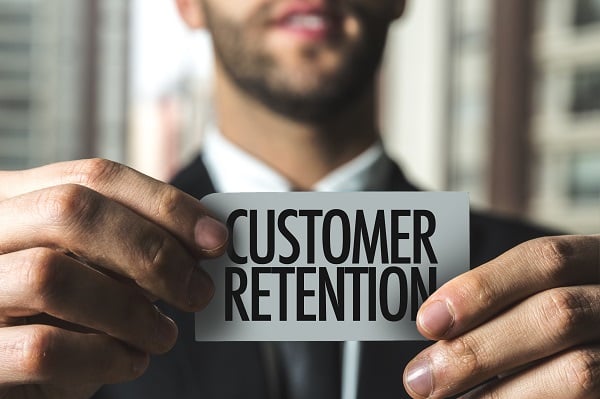Business owners don’t always equate brand values with the valuer of their brand, but knowing exactly what you stand for is more than nice words and self-promotion. One of The Marketing Centre’s part-time marketing directors and branding specialists, Lance Hiley, explains how a little self-knowledge can add a lot of performance...
Why are brand values important?
Brand values are the starting point for everything, the foundations of a business. We almost always begin there with the work we do at The Marketing Centre; by conducting a workshop where we try to understand what the core values of the organisation are.
When you’ve got the company’s core brand values well-defined, and you’ve worked through your messaging and you’ve engaged your whole organisation in producing them, it produces a really strong, cohesive vision: everybody’s singing from the same song sheet.
- You may like: Good marketing isn't always visible
If the brand essence is superficial - i.e. solely based around the product - but it doesn’t represent the way the business operates, it can cause problems.
So, let’s imagine I run a company, say...Lance’s Cyclewear. Lance’s Cyclewear is pushing an ecologically friendly angle because we use environmentally friendly fibres to make our clothing, but meanwhile, back at HQ, we have a Management Team that won’t buy recycling bins for paper in the office, that’s hugely hypocritical. This will be seen by the employees and will probably reduce morale in the workforce because the vision is superficial. If left unaddressed, it will filter-down to customers whenever they interact with the company and its staff. This can cause long-term issues with customer satisfaction, reputation and the general well-being of the organisation and its employees.
The brand is in the people, the brand is in the product, the brand is in the vision. It seeps through to all levels of the business.
How do companies define their brand values, or where do they come from?
A lot of companies struggle with articulating what they stand for: they know the product that they want to deliver but they have difficulty in explaining it to people. But the brand always begins with the people and the product or service.
Some companies have a vision at the beginning, but once they get stuck into it and they start thinking about it and they get other people involved in the business, the business evolves and changes a little bit. So the vision isn't set in stone, it can be flexible as the business grows. This is why getting employees involved is important.

Businesses evolve: Your vision should be flexible as the business grows
We normally talk to companies about brand values in two situations. One is where they’re spending a lot of money on their brand, and they want to see that they’re getting some returns on that spend. The other is where they’re seeing their brand’s performance decrease, and need to try and understand where the value in their brand is slipping away. We carry out a brand audit and, subsequently, they can take action to correct that.
How does a business conduct a brand audit?
Firstly, I don’t believe the company should do it at all!
Let me explain: I think a lot of companies believe that a brand audit is something they can do themselves, and I disagree.
People reading will probably look at this and think, ‘of course, he would say that’, but, well, there’s nothing I can do about that. But, in my opinion, brand reviews are absolutely a job for a third party.
Simply, you get a truer, more faithful collection of information and data, and I think you get a more faithful and independent analysis of that data. Pinching a few pennies to do something internally rather than to do it externally is a false economy. You’re not going to get a true readout of what people think about you, how they think about your brand, what they think about your product, and they’re unlikely to talk openly about how they see you in relation to your competitors.
How does the brand audit work? What steps are involved?
The first step is to look at why you’re doing the audit in the first place. We go through and look at what your positioning is in the market. If you’ve done analysis in the past, then you can obviously see whether you’ve moved or whether your brand has improved its position. If it’s the first time you’ve done it, then you can see where you stand in relation to who you perceive to be your competitors.
We also look at brand awareness. You can do this by, for example, how often someone is tweeting about your brand, or how many people like your brand or posts on Facebook. More traditionally, if you go to the pub and you’re talking to a group of people about a particular topic that your brand is a participant in, does your company name come up? Do people know your brand or your product by name? That’s a little bit more difficult to measure. Not everybody tweets, not everybody participates from a product point of view on Facebook, so you need to be able to dig into those other areas.
Then, we look at how you’re driving engagement, across all media platforms. You don’t necessarily want to be looking at press release column inches - there are too many automated journals that just suck up press releases and regurgitate them into newsletters. What you’re really looking for is value added editorials, where someone has taken content from you and added to it.
Let’s go back to Lance’s Cyclewear as an example: Say we just launched a new waterproof jacket and have issued a press release. If the article that appears in the press is exactly what I had set out, verbatim, that’s good, and people are going to see that, but it doesn’t really drive engagement with target audiences. However, an editorial where they’ve actually analysed the jacket - say a comparison article or an ‘Essential cyclewear piece’ - are far more valuable.
Those value added column inches prove that your activities are raising awareness within the editorial community, and generally readers will read and gain better awareness of your product as well.
That should be proven if you do some surveys, on a like for like basis, where you find a way to survey purchasers of waterproof jackets. In 2014, no one had heard of Lance’s Cyclewear. In 2015, 5-10% had heard of them. In 2016, maybe 25% or 50% had heard of them. The audit’s measuring that kind of result. It’s demonstrating that your brand is growing and that your brand is becoming more valuable.
How does the brand audit link with the brand values and, ultimately, the brand’s value?
We take some time to understand from a business what clients perceive their brand to be, what the values of the brand are: quality; comfort; environment; what have you. Furthermore, we dig-down deeper into those perceptions to understand how they sit against the different target customer groups: males, females, different age groups, occupation - even social class or education when appropriate. Then we look at how customers and the industry perceive your product: do they talk about your product using the same words and the same language?
Ultimately, the work that you do to define your brand and its positioning in your target markets translates to brand value. Going back to my earlier example: the worth of Lance’s Cyclewear will change based on perceptions - whether the public sees us as an innovative business, producing really good waterproof jackets that are made with ecologically friendly fibres, or a cheap wanna-be eco-friendly jacket.
Positioning and perception: How does the market view your brand?
A real-life example of this is Sir Paul Smith’s ‘Rapha’ cyclewear brand. Established in 2004 and despite the continental-sounding brand name, it is an English company. Originally a style-driven brand associated with “coffee and cakes in a bike shop,” says Micky McMahon of Cycling Weekly, it has transformed its fortunes by associating itself as the racewear supplied to Tour de France winning Team Sky resulting in the company reporting growth of 67 per cent for last year with an estimated turnover of £26.5M. Adding ‘performance’ to ‘style’ has dramatically increased sales performance and ultimately, brand value.
This success is available to all companies provided they think carefully about their brands, how it matches their company culture, go-to-market plans, products and market aspirations. Visualising that can be hard from the inside. You, or rather a third party, has to curate the elements that go into a market leading brand, and then realise it.
Can anyone tell that Lance is a keen cyclist? Articulating your brand values is the heart of your marketing strategy. To find out if you’re making your vision clear, try our free Marketing 360 healthcheck today.





-1.png?width=800&height=500&name=Expert%20View%20(1)-1.png)